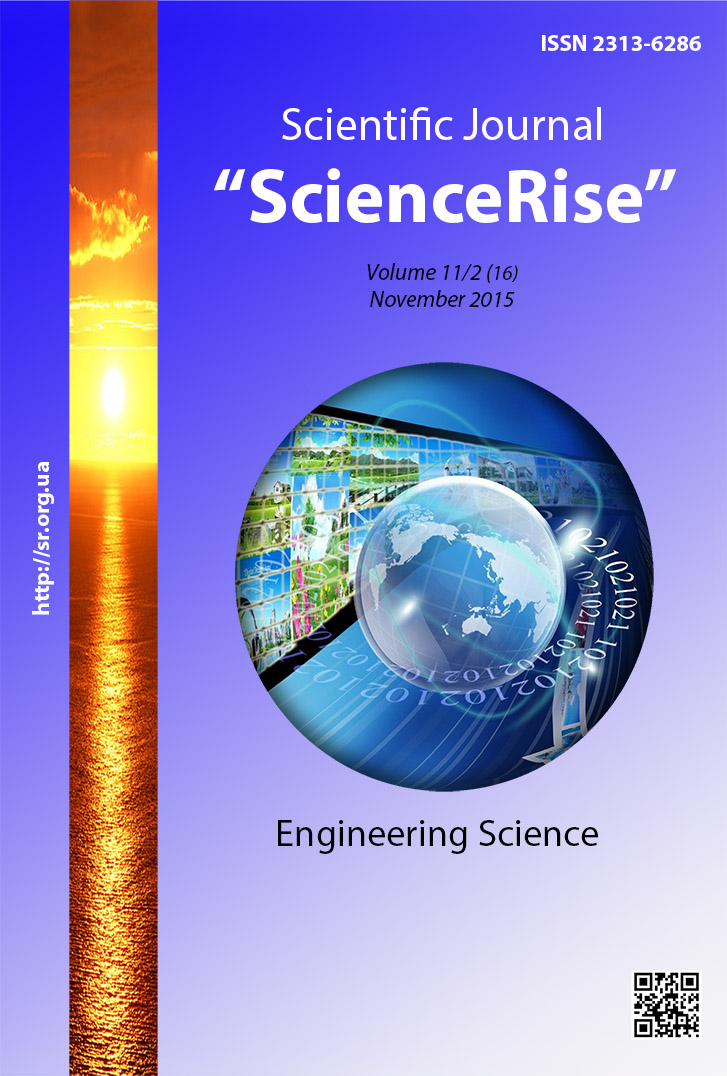Синтез и исследование производных оксазол-5-онов на основе α,β – ненасыщенных кетонов
DOI:
https://doi.org/10.15587/2313-8416.2015.53465Słowa kluczowe:
Оксазол-5-он, α, β-ненасыщенные кетоны, люминесцентные красители, диамины, подтверждение структуры, ПМР-спектроскопия, ИК-спектроскопияAbstrakt
В статье рассматриваются вопросы получения новых люминесцентных красителей производных оксазол-5-онов на основе α,β-ненасыщенных кетонов, а так же подтверждение структуры полученных соединений с использованием ПМР и ИК-спектроскопии. Красители этого ряда актуальны потому, что одной из актуальных практических задач в органической химии и химической технологии в настоящее время является поиск новых люминесцентных красителей для окраски полиэфирных материалов и полимеров
Bibliografia
Krasovitsky, B. M., Lisova, I. V., Bogdanova, L. I. (1995). Research 1,3,3-trimethyl indoline derivatives oxazol-5-one. Ukr. chemical. Zh., 61 (7), 102–104.
Krasovitsky, B. M., Afanasiadi, L. M., Lisova, I. V., Stryukov, M. B., Lyubarskaya, A. E. (1982). Spectral-luminescent properties and electronic structure of some substituted azlactone and azlaktamov. Zh. chemistry, 61 (10), 2481–2485.
Krasovitsky, B. M., Bolotin, B. M. (1984). Organic luminophores. Moscow: Chemistry, 336.
Krasovitsky, B. M., Afanasiadi, L. M. (1997). Preparative Chemistry Organic luminophores. Kharkiv: Folio, 205.
Desenka, C. M., Orlov, V. D., Gaponik, P. N., Loaf, V. P. (1990). Azageterocikly na osnove aromaticheskih nepredel'nyh ketonov. Himija acherocikl. coed., 11, 1533.
Dormidontov, Y. P. (2001). By UV, IR and NMR spectroscopy and its application in organic chemistry. Perm: PSU Department of Chemistry, 79.
##submission.downloads##
Opublikowane
Numer
Dział
Licencja
Copyright (c) 2015 Сергей Александрович Петров

Utwór dostępny jest na licencji Creative Commons Uznanie autorstwa 4.0 Międzynarodowe.
Our journal abides by the Creative Commons CC BY copyright rights and permissions for open access journals.
Authors, who are published in this journal, agree to the following conditions:
1. The authors reserve the right to authorship of the work and pass the first publication right of this work to the journal under the terms of a Creative Commons CC BY, which allows others to freely distribute the published research with the obligatory reference to the authors of the original work and the first publication of the work in this journal.
2. The authors have the right to conclude separate supplement agreements that relate to non-exclusive work distribution in the form in which it has been published by the journal (for example, to upload the work to the online storage of the journal or publish it as part of a monograph), provided that the reference to the first publication of the work in this journal is included.

